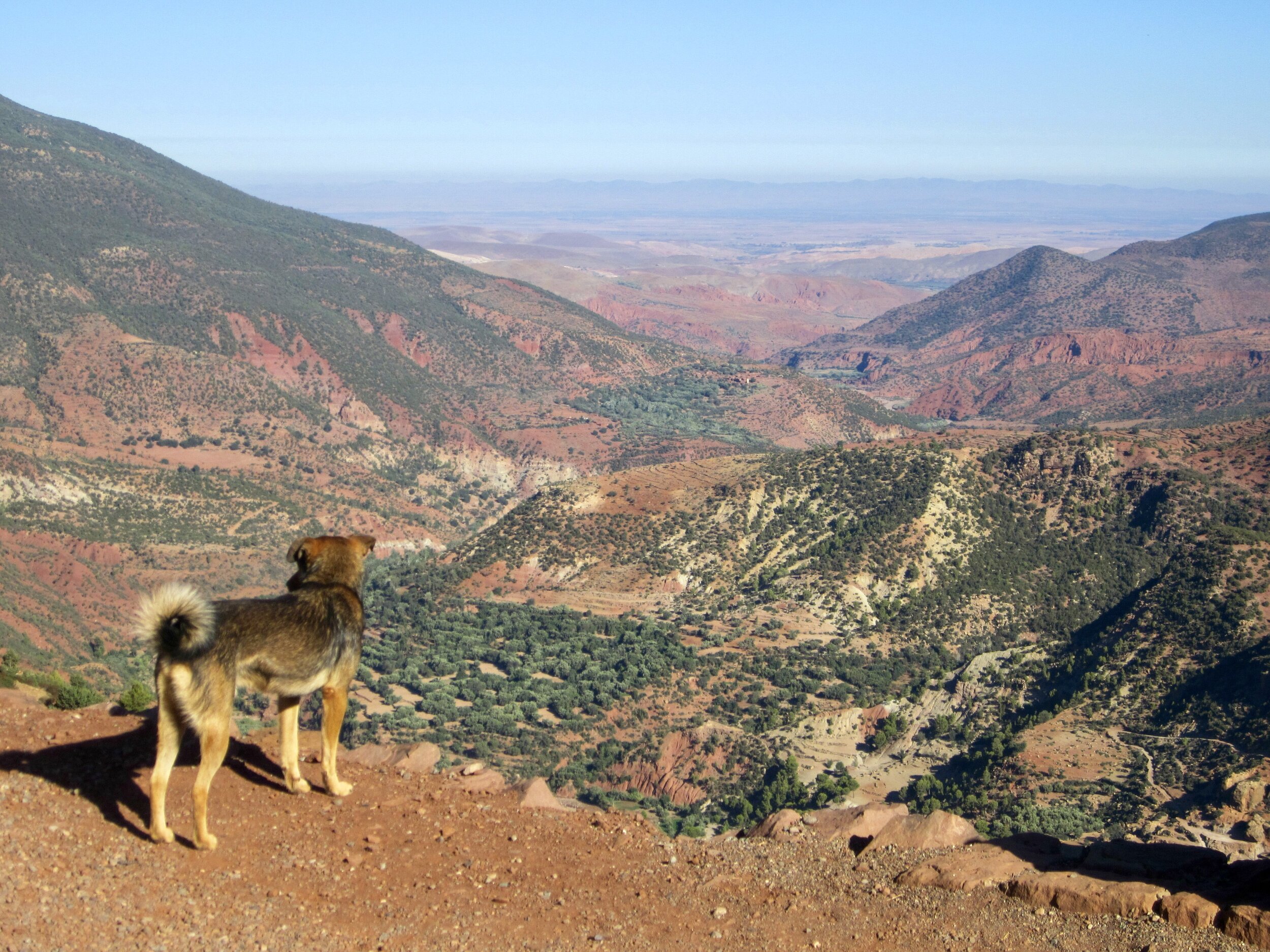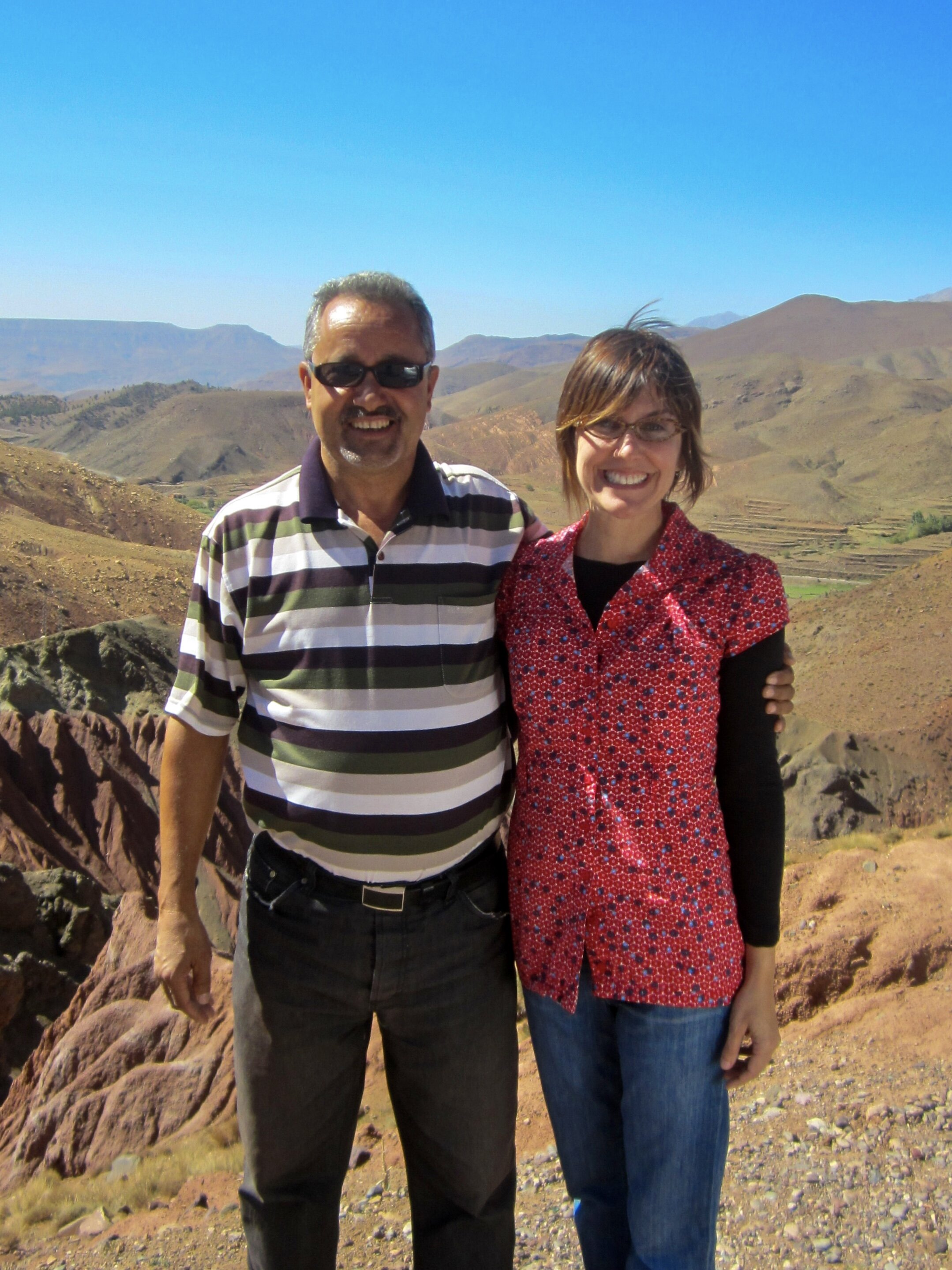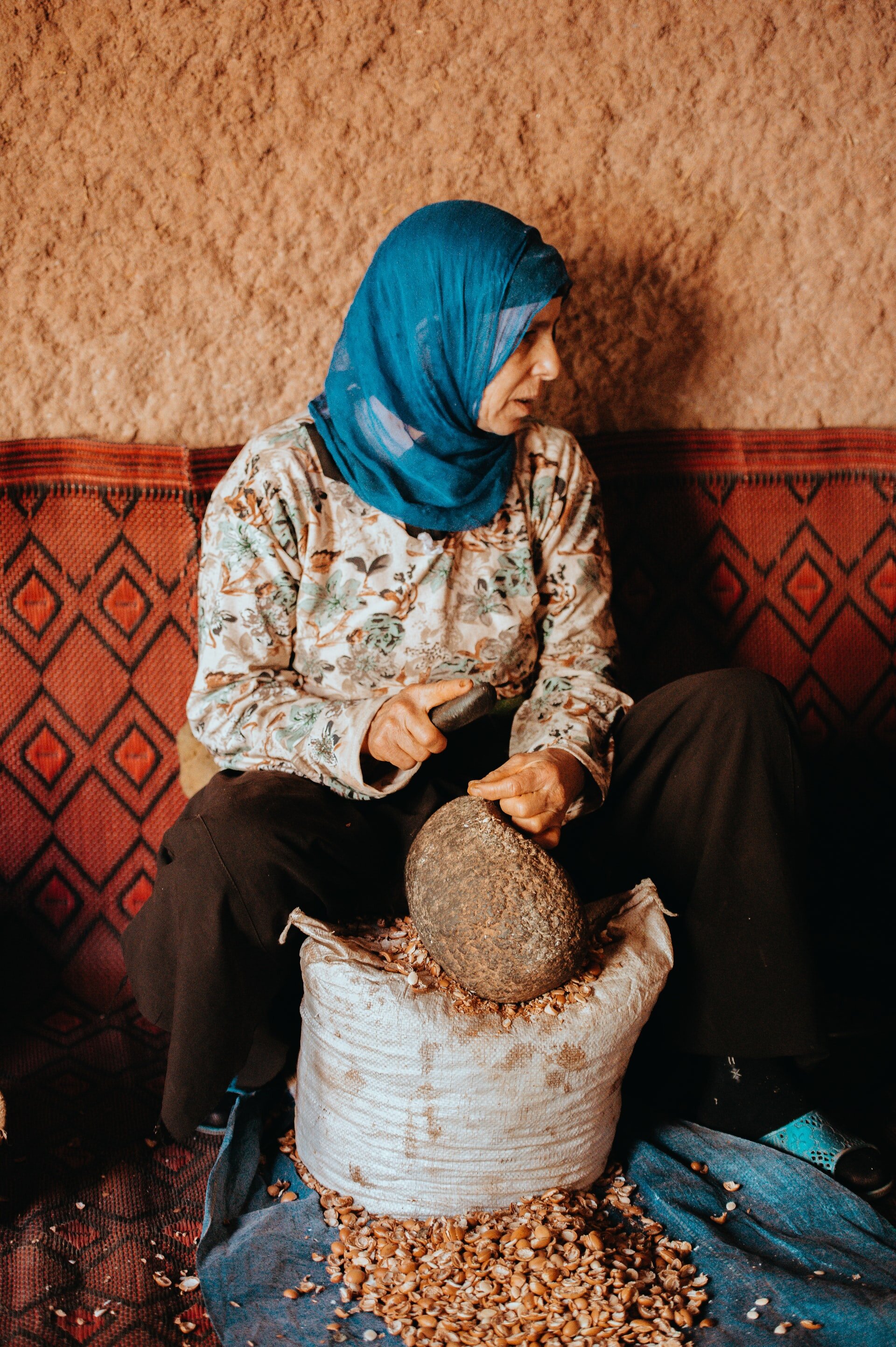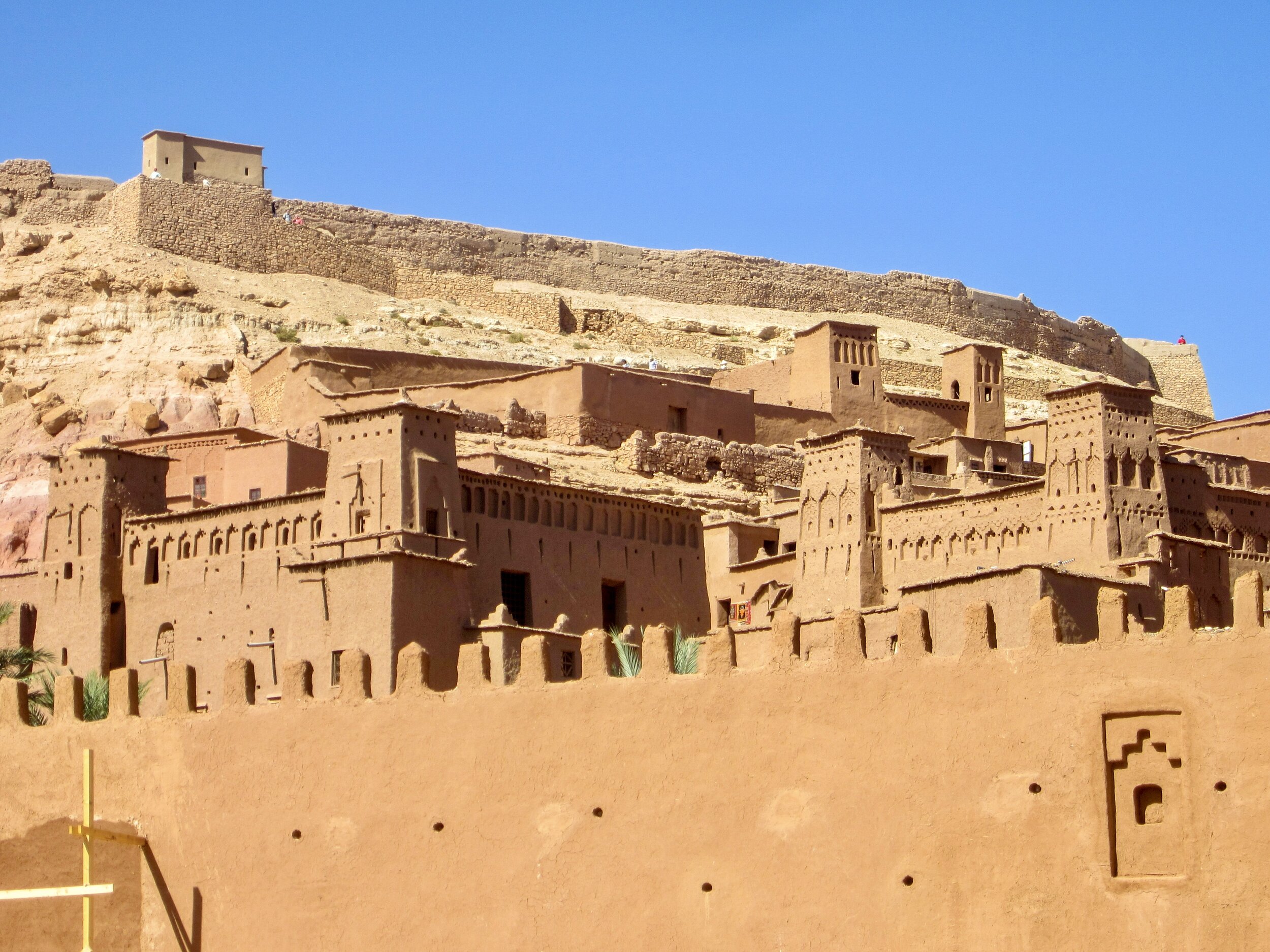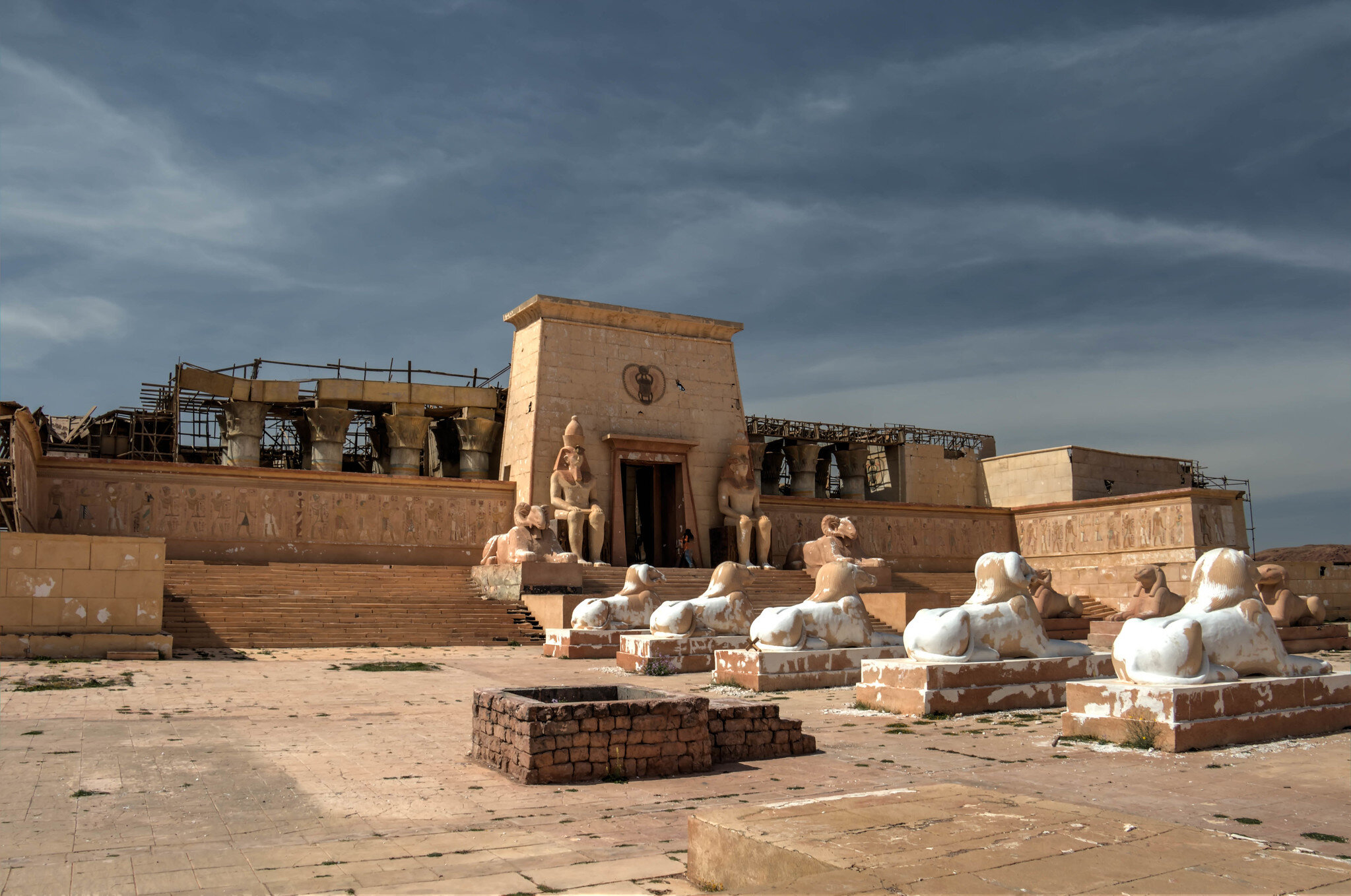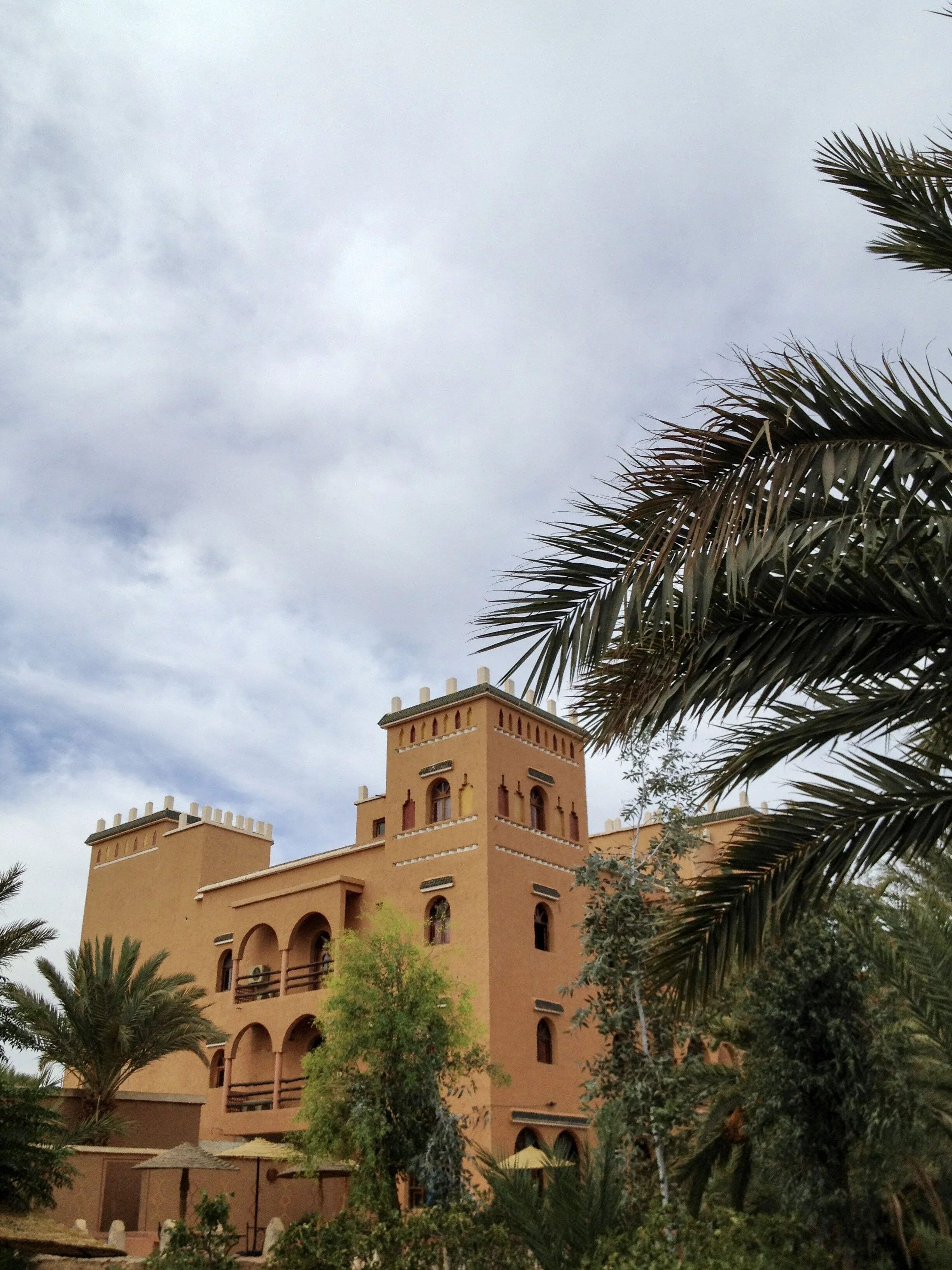The death-defying hairpin turns in the Atlas Mountains are worth it. With stopovers at Aït Benhaddou and Ouarzazate, a big part of the fun is the journey to Erg Chigaga for an overnight in the Sahara Desert.
A stray dog looks off at the Atlas range, surely thinking deep thoughts…like how no trip to Morocco is complete without a sojourn in the Sahara.
There was one thing we knew we couldn’t miss out on while Wally and I planned our itinerary for Morocco with our friend Vanessa: a once-in-a-lifetime opportunity for a desert adventure. We decided upon a three-day and two-night Sahara excursion through Imzi Tours.
The familiar sound of the muezzin’s voice broadcast over the speakers of the nearby Koutoubia Mosque in Marrakech woke me from my slumber at 5 a.m. When the alarm rang an hour later, I thought I’d half-imagined the call to prayer, asking Wally and Vanessa if they had heard it, too.
“Nothing can quite prepare you for being a passenger in a car maneuvering the tight cliffside turns with low guardrails found throughout the Atlas range. ”
By the time we got dressed, it was only 6:30 in the morning, so the kitchen at our riad, Alwachma, hadn’t opened — which meant we were served an abundance of carb-laden fare that left the three of us longing for the cumin-dusted fried eggs we had enjoyed the day before. Our breakfast spread consisted of msemen, a traditional flatbread cooked in a frying pan. It reminded me of a chewy square-shaped pancake, but was described best by Wally as “crêpe jerky.” This was accompanied by another unleavened bread, matloua, the Moroccan version of an arepa, which was served with preserves, freshly squeezed orange juice and French press coffee.
We had to get an early start for our desert excursion because Marrakech is roughly 225 miles from Zagora and the dunes of Erg Chigaga, though we had an overnight at Ouarzazate. At 8 a.m., the three of us met our guide and driver at the end of Derb Bab Doukkala, the cobblestone alley outside our riad.
His name was Mubarak, but he went by Barak. After asking our names, he promptly gave us Berber names: Vanessa was Fatima, Wally was Mustafa, and I was Ali. Vanessa whispered a theory that I was inclined to believe. She said Barak gave us Berber names so he didn’t have to remember our real ones. But what the heck, it’s all in fun, right?
Moustafa, Ali and Fatima…err, Wally, Duke and Vanessa stretch their legs and admire the view on a road trip through the Atlas Mountains in Morocco.
It’s a long ride to M’hamid, the launching point for the camel ride to the desert camp, but Barak assured us that there’d be plenty of stops along the way. Our first day would take us to an argan oil cooperative, Aït Benhaddou and Ouarzazate, where we would be spending the night.
Our driver Barak, posing with our friend, Vanessa. He was a fiercely proud Berber and expounded about his people at length.
The Free People: A Lesson About Berbers
As we sped along National Route 9, Barak explained that there are several different types of Berber tribes, the semi-nomadic people who inhabit the Sahara. Two of the largest populations are found in Algeria and Morocco. Their livelihood revolves around traveling with their livestock as the seasons change.
The name Berber was ascribed to the oldest known inhabitants of the Barbary Coast of North Africa. The term stemmed from the Greek bárbaros, used to refer to any foreigner, and which is the root of the derogatory term barbarian. It’s understandable that Berbers prefer to call themselves Imazighen, which means “Free People” in the indigenous Tamazight language.
Berber on a motorbike: A man whizzes by in traditional Berber garb.
The southern Atlas and Anti-Atlas Mountains are home to the Shilha, the largest Berber tribe in the country and often viewed as having the “purest” dialect: Tashlheit, the most commonly spoken in Morocco.
Riffan or Rif Berbers speak a dialect called Tarafit. The smallest Berber population in the country, this group stays within the bounds of the Rif Mountains.
In the Middle Atlas are the Zayanes, who spread from Fès in the north to Marrakech in the south. Their dialect, Tamazight, varies wildly from region to region but is usually intelligible by native speakers. Some Zayanes, particularly those near Ouarzazate in the south, are still nomads.
It’s astonishing how much work goes into extracting oil from the argan nut.
Argan Oil Women’s Collective: A Tough Nut to Crack
As we entered the High Atlas Mountains, the undulating surface of the surrounding landscape resembled gray-green fleshy folds of walrus skin peppered with errant bursts of green scrub. In other parts, it was like driving through the Grand Canyon. A frequent roadside sight are the paddle-shaped limbs of the nopal cactus bearing prickly pear fruit in varying states of ripeness.
Argan trees are indigenous to the Atlas Mountains. They are thorny, drought-resistant trees that bear a hard yellow fruit.
Argan trees are quite tenacious and can grow on rocky outcroppings. The oil from their fruit is used in cosmetics and cooking.
Our first stop was a roadside argan oil cooperative shop whose parking lot was littered with desiccated argan fruit husks. Inside, Berber women demonstrated the manual labor required to make this “Moroccan gold.”
Collectives like the one we visited help provide women with lucrative employment.
One pair was seated and cleaved the inner nut with a sharp stone to extract the kernels. Another pair ground the roasted kernels between two slabs of rock into a paste that resembled natural peanut butter. A woman who served as a guide told us that two types of oil are produced — one is used in cosmetics while the other is used like olive oil in cooking.
Because the extraction process is labor intensive (it takes between 25 to 30 kilograms of argan kernels to produce 1 liter of oil), the government has established a fund to help ensure the success of cooperatives like this. UNESCO has designated the 10,000-square-mile argan growing region as a biosphere reserve. This empowers the women who produce the oil, providing them with fair wages, an opportunity to improve the welfare of their families and safe working conditions.
The trio of adventurers reach the highest point in the Atlas range — and, indeed, in all of North Africa.
Tizi n’Tichka: High Point of the Atlas Mountains
Whenever we stopped to take a photograph anywhere along Route 9, a local man or boy emerged from the rocks brandishing geodes split open for us to see the glittering crystalline structures inside, some artificially dyed a vibrant pink or blue.
We passed dozens of beaten earth houses, many of which appeared to be uninhabited, although we learned from Barak that this wasn’t always the case.
The houses in the mountains are made of local materials and, as a result, are practically camouflaged.
Laundry is put out to dry in the sun on the rocks of the Atlas Mountains.
Before making our descent into Ouarzazate, known as the Gateway to the Sahara, we reached the highest point of the Atlas Mountains. At an elevation of 7,410 feet (2.260 meters) above sea level, Tizi n’Tichka is the highest mountain pass in North Africa. We stopped for a moment to take in the incredible views and an obligatory photo, of course.
We were sure we’d never make it through the mountains alive, as Barak sped past large trucks winding through the switchbacks of the Atlas.
Nothing can quite prepare you for being a passenger in a car with a driver maneuvering the tight cliffside turns with low guardrails found throughout the Atlas range. Since this route is shared by trucks and other large passenger vehicles, the three of us would lean to the opposite side every time Barak passed a vehicle on the narrow lanes, in hopes that this would help prevent our car from toppling over the edge.
You definitely have to stop off at Aït Benhaddou en route to the Sahara.
Hollywood in the Desert: Aït Benhaddou and Atlas Studios
One of the coolest stops en route to the Sahara was the fortified village of Aït Benhaddou. Barak told us that the oldest dwelling in what he called a kasbah was built in the 11th century, though UNESCO dates the oldest construction “to be no earlier than the 17th century.”
Wally thinks the ancient structures of Aït Benhaddou look like sandcastles.
Regardless, the atmospheric desert dwellings have been so well preserved that it has captured the imagination of Hollywood. Several productions have been shot here including, The Sheltering Sky and The Mummy. In fact, a large artificial entrance had been constructed for the Daenerys storyline in Game of Thrones — but unfortunately, they weren’t going to start filming for another month or so, much to Wally’s dismay.
Many movies set in Ancient Egypt have been filmed at Atlas Studios in Ouarzazate.
Speaking of Hollywood, the next stop was Atlas Studios in the town of Ouarzazate, where numerous desert-themed movies have been filmed. For some reason, our guide was enthralled with Steven Segal. The group we toured with was predominantly French, with a small group of English-speaking Brazilians.
Most of the sets were made of fiberglass with back supports of bamboo scaffolding. I was intrigued by the false perspective and scale used in the spaces to trick the eye.
Hopefully Les Jardins de Ouarzazate has been upgraded a bit since our visit.
Les Jardins de Ouarzazate Hotel: I Never Promised You a Rose Garden
Atlas Studios also boasts an exclusive 10-suite hotel aptly named the Oscar. Perhaps we should have stayed there instead of Les Jardins de Ouarzazate, which was included in our tour package.
At the time we visited, back in 2012, the hotel had clearly seen better days. A layer of dust and grime covered everything inside the expansive lobby and I half-expected to see Miss Havisham from Dickens’ Great Expectations descend the tiled stairs.
Our room, at the top of the stairs, had a foul smell, so we were upgraded to a private suite off to the side of an unkempt but beautifully wild rose garden and swimming pool. Both rooms were dark, and when we went to take showers the following morning, the water was cold.
An old man kept pacing around the pool. Vanessa thought he was lost; I thought he was a Peeping Tom; but Wally fabricated the most amusing story: The geezer was wandering around looking for Arab boys. “Is this where the Arab boys are?” Wally said, mimicking an old man’s voice, while I laughed. “I thought I saw one come back here.”
The highlight of our stay was our waiter. He was quite jovial, so we nicknamed him Giggles. He asked us if we were doctors because we were all wearing glasses.
There was a little kitten that stayed next to me throughout dinner. It took all of my willpower not to toss it a scrap of food.
Breakfast was a buffet of fly-smothered, day-old croissants loosely covered with cloth napkins.
Mediocre hotel aside, the interesting stopovers make the journey to the Sahara as much fun as the overnight in the desert itself. –Duke

